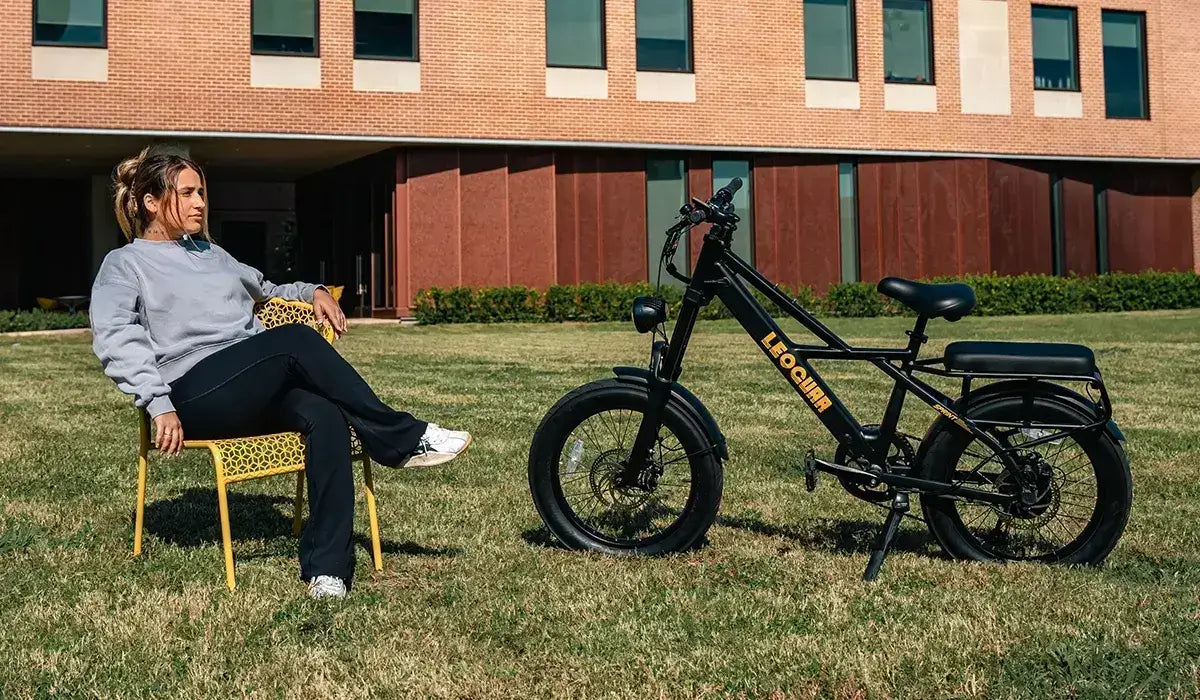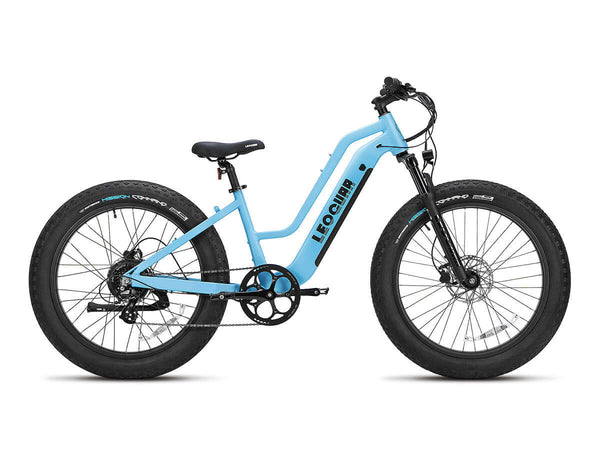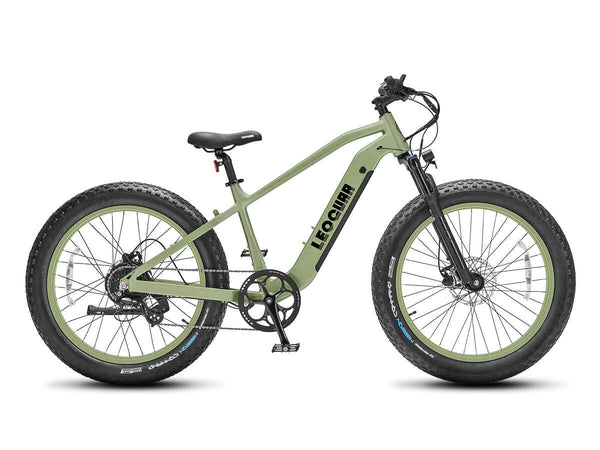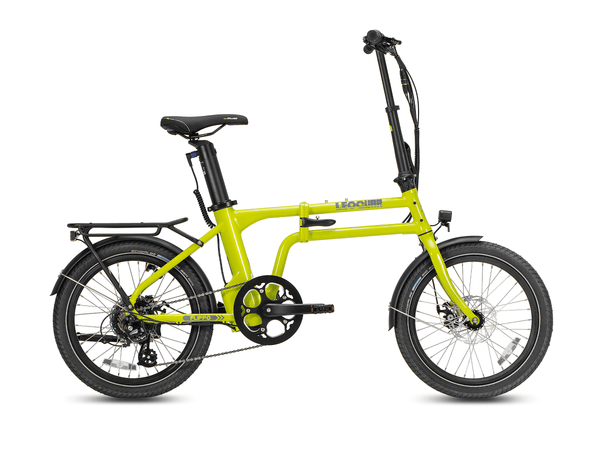
Best Electric Bikes for the Money: What You Get at $1000 vs $1500
The Value Sweet Spot
Looking at e-bikes can feel overwhelming. But if you have $1000 to $1500 to spend, you're in a great spot. This price range is where every dollar makes a big difference in what you get. It's the sweet spot where you see major improvements in quality and performance. You don't have to spend thousands of dollars to get a really good bike. Knowing what that extra money buys helps you find the best electric bike for your needs.
From Entry-Level to Quality
You can find e-bikes for under $1000, but those are usually basic models. Moving up to the $1000-$1500 range changes everything. You go from a simple powered bike to something you can rely on every day. The biggest improvements come in three areas: ride quality, reliability, and safety. This article shows exactly what an extra $500 gets you. It will help you decide if spending more is worth it for how you plan to ride.
The Sub-$1000 E-Bike
First, let's look at what you get for under $1000. These bikes are great for getting people started with electric bikes. They have specific parts and give you a certain kind of ride experience. Knowing what they can and can't do is important.
Core Component Baseline
A sub-$1000 e-bike focuses on being practical and affordable. Here's what you typically find after testing many bikes in this price range:
- Motor: You'll almost always get a 350W to 500W rear hub motor. This gives you enough power for flat roads and small hills. It's a reliable system that works without expensive extras.
- Sensor: The pedal assist uses a cadence sensor. This detects when you pedal, not how hard you pedal. The power feels more like an on/off switch - once you start pedaling, the motor kicks in with a strong push.
- Brakes: Most use mechanical disc brakes. They work with a steel cable to pull the brake parts, just like regular bikes. They stop you safely but need more hand strength and regular adjustments.
- Battery: Expect between 360Wh and 500Wh of capacity. In real riding, this usually means 20-40 miles of range. This depends on your weight, the terrain, and how much assist you use.
- Drivetrain: You'll usually get a basic 7-speed Shimano Tourney system. It provides enough gears for most casual riding situations.

Who Is This Bike For?
A sub-$1000 e-bike works great for light commuters, weekend riders, and people riding mostly on flat ground. The cadence sensor creates a specific ride feel. You'll feel a clear push when the motor starts helping you. This is great for getting moving from a stop, but it can feel jerky on rolling hills or when you want to keep a steady speed. The mechanical brakes will stop you safely. You'll notice you need to squeeze harder on steep hills compared to better brake systems. It's a good bike for fun rides and short, simple trips.
The $1500 Upgrade
What happens when you spend about $500 more? This is where things get really interesting. Moving to the sub-$1500 price point gets you upgrades that completely change how the bike rides. You go from having a fun toy to owning a serious way to get around. The improvements focus on making the ride smoother, giving you better control, and lasting longer.
Key Performance Upgrades
The extra money doesn't just buy a more powerful motor. It goes into smart parts that make the ride feel more natural, safer, and more reliable.
A Better Ride: Torque Sensors
This is probably the most important upgrade you can get. Instead of just knowing if you're pedaling, a torque sensor measures how hard you're pedaling. The result is smooth, natural power that feels right. The motor boosts your effort seamlessly. It's like having superhuman legs instead of feeling jerky and unnatural. You get precise control, especially when going slow or on tricky terrain.
Superior Stopping: Hydraulic Brakes
The second big upgrade is moving from mechanical to hydraulic disc brakes. Instead of cables, these systems use fluid in sealed lines to work the brakes. This gives you three huge benefits: much less hand effort needed to stop, better control over braking power, and pads that adjust themselves as they wear. They work better in wet weather and need much less maintenance.
More Power and Range
In the sub-$1500 range, you'll find stronger 500W to 750W motors from better brands like Bafang. More importantly, batteries often increase to 600Wh or more, giving you longer range. These batteries are more likely to use cells from known companies like Samsung, LG, or Panasonic. These generally work better, last longer, and are safer.
Improved Build Quality
The extra budget also improves the details. You'll see better frame finishing with batteries built into the frame instead of bolted on top. Gear systems upgrade from Shimano Tourney to Acera, giving you smoother and more reliable shifting. You also start seeing brand-name tires, more comfortable seats, and better grips. All of these make the bike more pleasant and durable.
The $500 Difference
Let's compare the two price ranges side by side. This breakdown shows all the technical details in a simple, benefit-focused way.
How $500 Transforms Your Ride
This table shows where your extra money goes and what it means for your daily rides.
| Feature | Typical E-Bike Under $1000 | Typical E-Bike Under $1500 | Why It Matters for You |
|---|---|---|---|
| Pedal Assist Sensor | Cadence Sensor | Torque Sensor | Smoother, more intuitive ride. Power feels natural, not jerky. |
| Brakes | Mechanical Disc Brakes | Hydraulic Disc Brakes | Better stopping power, less effort. More reliable in all conditions. |
| Battery Capacity/Quality | 360Wh-500Wh (Generic Cells) | 500Wh-700Wh+ (Branded Cells) | Longer range and better long-term battery health and safety. |
| Motor Power/Brand | 350W-500W (Generic) | 500W-750W (Often Branded) | More power for hills and carrying loads with confidence. |
| Drivetrain & Parts | Basic (e.g., Shimano Tourney) | Upgraded (e.g., Shimano Acera) | Smoother gear shifting and more durable, reliable components. |
| Frame & Integration | External Battery | Often Integrated Battery | A cleaner look and better weight distribution for improved handling. |
| Warranty & Support | 1-Year Standard | Often 1-2 Years, better support | Greater peace of mind and confidence in your investment. |
Your Decision Guide
Now for the most important question: which bike is right for you? The answer depends completely on how you plan to use it. Let's break it down into clear user types.
Choose a Sub-$1000 E-Bike If...
- Your rides are mostly for fun on weekends. If you want to explore bike paths and enjoy the outdoors, a sub-$1000 bike is a perfect and affordable way to start.
- Your commute is short and flat. For trips under 10 miles on mostly level ground, a budget e-bike has more than enough power and range.
- You're on a strict budget. These bikes offer the best way into the e-bike world without spending a lot of money.
- You're comfortable with minor maintenance. You don't mind occasionally adjusting brake cables or being careful with your battery.
Stretch to $1500 If...
This will be your daily workhorse. If you plan to use your e-bike for daily commuting, the upgrades in reliability and ride quality are essential. A torque sensor makes stop-and-go traffic much smoother. Hydraulic brakes give you confidence in all weather.
- Your route includes hills. This is a major factor. The combination of a more powerful motor and natural power delivery makes climbing hills feel easy instead of hard.
- You value a refined ride feel. If you're an experienced cyclist or don't like the jerky on/off feel of a cadence sensor, upgrading to a torque sensor is essential. It makes the bike feel like part of your body.
- You need to carry cargo. Whether it's groceries, a laptop bag, or even a child seat, the extra power and stronger braking provide a much more stable platform.
- Safety is your top priority. The better stopping power and control of hydraulic disc brakes are a significant safety feature. This is especially true in busy city environments or on steep hills.
- You want a buy it nice or buy it twice investment. The higher-quality parts, from battery cells to gear systems, are designed to last longer with daily use. This gives you better long-term value and fewer problems.

The Final Verdict
There is no single best choice, only the best choice for your needs. The best electric bike under $1000 is more capable and fun than ever before. It offers an incredible entry point into electric mobility. For casual use, it's a fantastic value.
However, our extensive testing shows something important. The $500 gap between $1000 and $1500 represents the biggest leap in quality in the entire e-bike market. That extra investment buys you a fundamentally better machine. It's smoother, safer, more reliable, and more capable.
If you plan to ride frequently, tackle hills, or rely on your e-bike for transportation, stretching your budget to $1500 delivers upgrades you will appreciate on every single ride.
Frequently Asked Questions
1. Q: Is the difference between a $1000 and $1500 e-bike really that noticeable?
A: Yes, absolutely. The jump from cadence to torque sensors alone transforms the entire ride experience. You'll feel the difference immediately - the bike responds naturally to your pedaling effort instead of giving you an on/off power delivery. Combined with hydraulic brakes and better components, it's like riding a completely different class of bike.
2. Q: Can I upgrade my sub-$1000 e-bike later instead of buying a more expensive one now?
A: Unfortunately, most core components like sensors and brake systems can't be easily upgraded after purchase. The cost of retrofitting would often exceed buying a better bike initially. It's generally more cost-effective to buy the right bike from the start rather than trying to upgrade later.
3. Q: How much longer will a $1500 e-bike last compared to a $1000 one?
A: With proper maintenance, a $1500 e-bike typically lasts significantly longer due to higher-quality components. The branded battery cells alone often provide 2-3 years more usable life. Better drivetrains, hydraulic brakes, and stronger frames mean fewer repairs and replacements over time, making the higher upfront cost worthwhile for regular riders.
4. Q: Are there any good alternatives in between the $1000-$1500 range?
A: The $1200-$1300 range can offer some middle-ground options, but you often get partial upgrades - maybe a torque sensor but still mechanical brakes, or hydraulic brakes but a smaller battery. For the best value, it's usually worth saving the extra $200-$300 to get the full package of upgrades that the $1500 range provides.
5. Q: Which upgrade should I prioritize if I can only afford one: torque sensor or hydraulic brakes?
A: If you had to choose just one upgrade, prioritize the torque sensor for daily riding comfort and the hydraulic brakes for safety-critical situations. For flat terrain and casual riding, go with the torque sensor. For hilly terrain, heavy loads, or frequent stops in traffic, prioritize hydraulic brakes. Ideally, get both by stretching to the $1500 range.












































Leave a comment